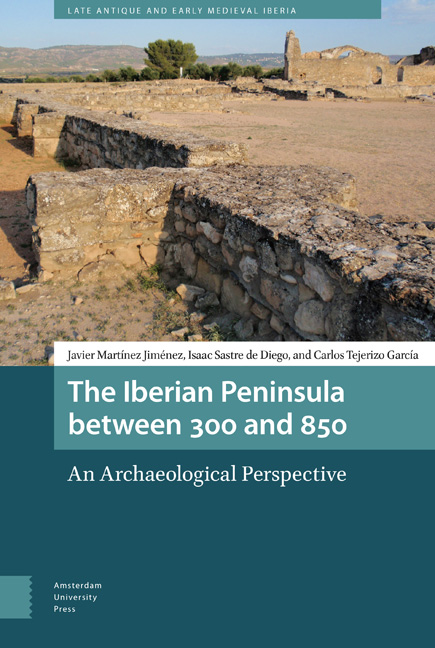Book contents
- Frontmatter
- Contents
- List of Figures
- Acknowledgements
- Preliminary notes
- Preface
- Introduction: An archaeological perspective on the Iberian peninsula between Rome and the Middle Ages
- Part 1 The Late Roman period
- Part 2 The post-Roman period
- Part 3 The Early Middle Ages
- Appendix 1 Site reference table
- Appendix 2 Maps
- Appendix 3 Lists of rulers
- Abbreviations
- Bibliography
- Index
Preface
Published online by Cambridge University Press: 10 December 2020
- Frontmatter
- Contents
- List of Figures
- Acknowledgements
- Preliminary notes
- Preface
- Introduction: An archaeological perspective on the Iberian peninsula between Rome and the Middle Ages
- Part 1 The Late Roman period
- Part 2 The post-Roman period
- Part 3 The Early Middle Ages
- Appendix 1 Site reference table
- Appendix 2 Maps
- Appendix 3 Lists of rulers
- Abbreviations
- Bibliography
- Index
Summary
This is an important book for two reasons. Firstly because, over the last thirty years or so, a considerable amount of sophisticated and important work has been done in Iberia on the archaeology of its late Roman and early medieval phases. But because most students, and indeed most medieval archaeologists, are poor linguists (at least in the anglophone world), and because the vast majority of Iberian research is written in Portuguese, Spanish or Catalan, it is almost completely ignored by university courses elsewhere in Europe, and passed over even in the scholarly literature. Here we have a book that provides a detailed overview of the late Roman and post-Roman archaeology of Iberia in the language that, for better or worse, is rapidly becoming the lingua franca of scholarship. Furthermore it is a serious book, with excellent illustrations, a full bibliography, and a confident awareness of archaeological developments elsewhere in Europe, written by three young scholars who are all actively involved in the archaeology of Spain, and who between them bring detailed first-hand knowledge on many of the central aspects of their subject, such as urbanism, rural settlement, water-supply, church architecture, and burial archaeology. With the publication of this book, Iberia in the crucial period AD 300-850 can no longer be ignored by archaeology courses, nor side-lined in general discussions of developments in post-Roman Europe.
Secondly, understanding what happened in Iberia in this period from an archaeological perspective is peculiarly interesting and important, because, unlike most of the Roman Empire, the peninsula witnessed two major take-overs of power, and the formation of two new states, based on very different foundations: the Visigothic kingdom established in the fifth and sixth centuries, which of course paralleled developments in Gaul and Italy; but also a Muslim invasion from the Maghreb in 711 (that later evolved into an independent caliphate), which took most of Iberia in a very different direction from the other European former provinces of Rome. Did these momentous political changes, which are poorly documented in the written sources, have an impact on the ground, such that they show up in the archaeological record?
- Type
- Chapter
- Information
- The Iberian Peninsula between 300 and 850An Archaeological Perspective, pp. 21 - 22Publisher: Amsterdam University PressPrint publication year: 2018



